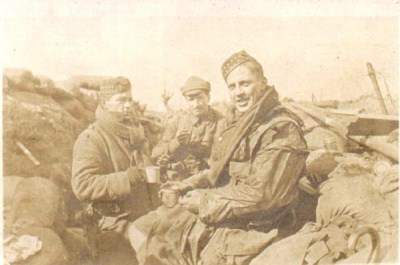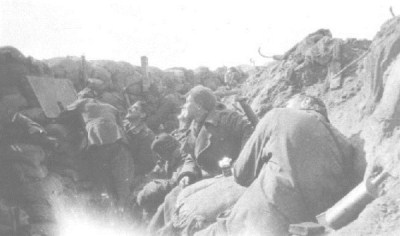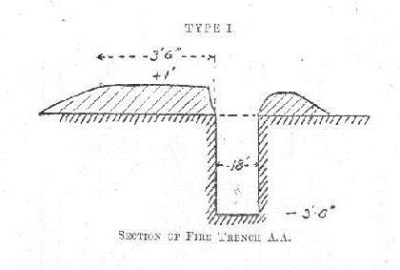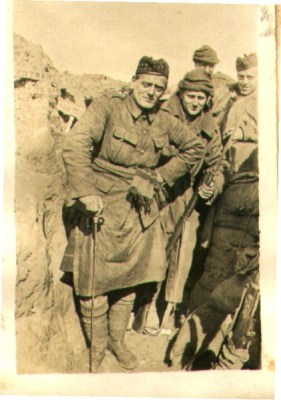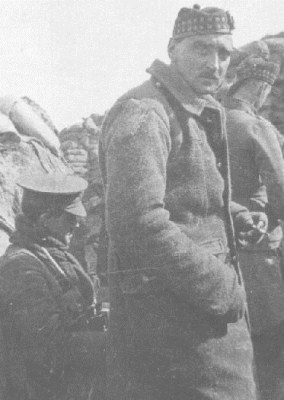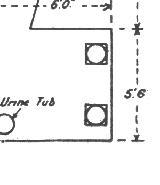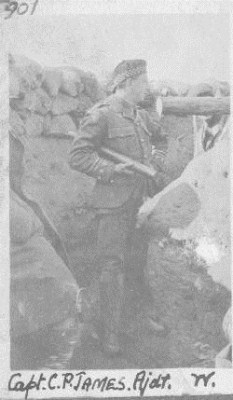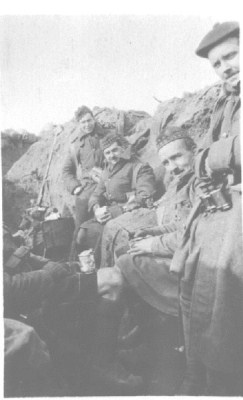The Adjutant
The Adjutant in the Trenches
Captain CP James A&SH, Adjutant 1/10th (Scottish), The King's (Liverpool Regiment)
 Captain James was the Adjutant of the 1st/10th (Scottish) Battalion, The King's(Liverpool Regiment) at the outbreak of war in August 1914. This battalion, known usually as the Liverpool Scottish, was a Territorial battalion although he was a regular officer of the Argyll and Sutherland Highlanders (which is what A&SH means). His rôle as Adjutant was to act as the Commanding Officer's executive officer and this made him senior to every other captain in the battalion.
Captain James was the Adjutant of the 1st/10th (Scottish) Battalion, The King's(Liverpool Regiment) at the outbreak of war in August 1914. This battalion, known usually as the Liverpool Scottish, was a Territorial battalion although he was a regular officer of the Argyll and Sutherland Highlanders (which is what A&SH means). His rôle as Adjutant was to act as the Commanding Officer's executive officer and this made him senior to every other captain in the battalion.
He is pictured here probably sometime in early 1915 wearing glengarry, service dress jacket with breeches (as the adjutant, he would have had a horse for mobility and would not normally have worn a kilt) and some form of Wellington boot. The object under his arm is not a telescope but a trench periscope which meant that a soldier could look over the top of the parapet into 'no-man's-land' and toward the enemy trenches without exposing himself to an enemy sniper. When he came to France in 1914, he would have carried a sword (see the picture of his predecessor below) as part of his normal field service kit. Swords quickly disappeared in the trenches and officers carried a pistol and often a walking stick known as an 'ashplant'.
His rank is shown on his sleeve by the rings an by the three stars or 'pips'. More of these badges of rank can be seen here. He seems to have medal ribbons on the left hand side of his chest which might well represent service in the Boer War He was commissioned in 1900 and went on to command other infantry battalions winning two DSOs (the distinguished Distinguished Service Order was an award for bravery or distinguished conduct at a level immediately below that of the Victoria Cross) and was mentioned in the dispatches three times. A 'mention in dispatches' is a reward for brave or distinguished service which placed in the London Gazette, the British Government's own bulletin in which all official business is recorded. A soldier in the First World War who was 'mentioned in dispatches' was entitled to wear an oak leaf emblem on the ribbon of the Allied Victory medal.
Field Marshal Montgomery recorded that on mobilisation (the procedure that takes place when an army move from peace to war) in August 1914, when he was a young officer with the Royal Warwickshire Regiment, all officers' swords were sent to the armourer for sharpening. They were carried on active service in the first few months of the war but were quickly taken out of use amongst the infantry as the war became more static.
The Pre-War Adjutant
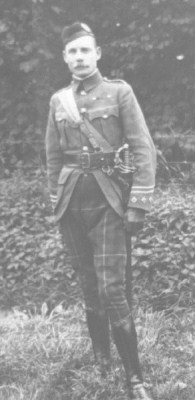 The previous adjutant of the Liverpool Scottish, Captain the Hon. AH Maitland of the Queen's Own Cameron Highlanders, is shown here (probably in 1912). He is wearing tartan breeches (apparently in Forbes tartan) and riding boots. He is carrying a broadsword with the half basket hilt used by field officers (majors and above) as well as the Adjutant. He seems to be dressed for field service as the strap for what is probably a haversack is below the cross-strap of his Sam Browne sword belt.
The previous adjutant of the Liverpool Scottish, Captain the Hon. AH Maitland of the Queen's Own Cameron Highlanders, is shown here (probably in 1912). He is wearing tartan breeches (apparently in Forbes tartan) and riding boots. He is carrying a broadsword with the half basket hilt used by field officers (majors and above) as well as the Adjutant. He seems to be dressed for field service as the strap for what is probably a haversack is below the cross-strap of his Sam Browne sword belt.
Despite serving in an infantry battalion Adjutants are mounted officers as they rode a horse and wore spurs. Captain Maitland's spurs can just be seen at his right heel . This tradition is maintained even today as the Army's No 1 Dress (a ceremonial form of uniform) and Mess(evening) dress when those officers (including adjutants of infantry battalions) and soldiers who would have been mounted continue to wear spurs.
Link to each page by clicking the images below.
Previous page: The Latrines

